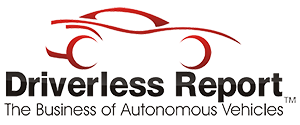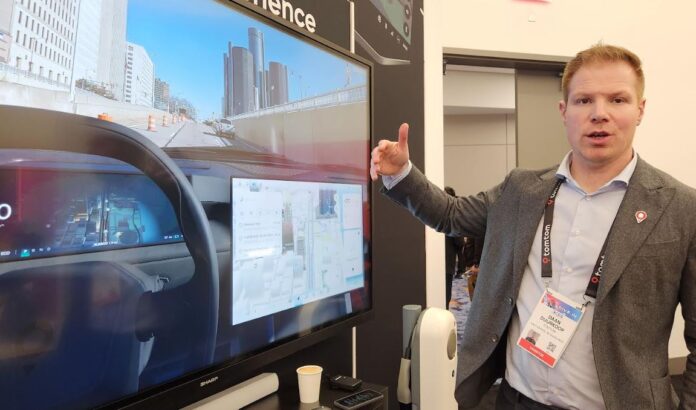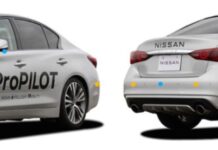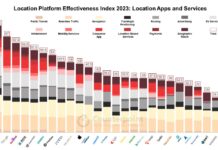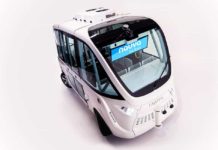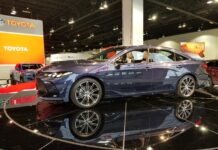10-year partnership allows mapmaker to automate processes, CEO says
LAS VEGAS—In a mammoth $1 billion cloud infrastructure deal, HERE Technologies and Amazon Web Services AMZN 0.00%↑ (AWS) plan to support AI-powered live streaming map and location services for multiple markets. The agreement, which runs for 10 years, was announced at CES this week.
While it is unclear how the big dollars will be divided, HERE CEO Mike Nefkens said the deal allows both companies to combine expertise to help automakers quickly get software-defined vehicles, electric and autonomous cars to market.
“In the old days, we had different cars drive around on streets with big towers on them. It took three months to [aggregate] all of the data,” he said. “Because of the massive amounts of data, through our partnership with AWS, and using their AI and tools, we will get to those errors quicker to allow a faster live map in a vehicle. Because we are being measured against a cell phone, our maps need to be live and this deal will help us go from three to four weeks in processing down to one or two days.”

Nefkens said a big component of the deal, which was completed in November, but only announced this week, is exclusive access to AI and the ability to go beyond their long-term relationship in cloud services to advanced mapmaking.
AWS, which announced a deal at CES with Honda to transition the automaker’s cars from hardware-based to SDVs, helped to build SceneXtract with HERE SceneXtract, which leverages the HERE HD Live Map and cloud services, allows autonomous vehicle and ADAS developers to reduce the time for manually searching, locating, and converting real-world environments into simulation-ready scenes, the company said.
Overall, Nefkens, who has been at the helm of the company for more than a year, said HERE had solid financial results in 2024. “In the face of what’s been going on in the automobile industry, we have stabilized the business and have the best financials in nine years,” he said. “A big win in 2024 may be our signing with Hyundai. But a smaller deal, one with Renault, is significant because it is for a next-generation roadmap.”
At CES, the company also partnered Sony Honda Mobility (SHM) to integrate the HERE Navigation SDK into the AFEELA digital cockpit. AFEELA, jointly developed by Sony and Honda, will use the HERE SDK Explore for its mobile application.
In other CES HERE news:
- The company and AiDEN Automotive partnered to integrate’s HERE’s automatic road and traffic alerts into vehicles using AiDEN’s in-vehicle platform. HERE’s alerts allow a vehicle to receive real-time, context-aware information based on the specific conditions of each vehicle. These include weight, speed, location, and road conditions, the company said.
- Togg will integrate HERE’s EV maps across its vehicle lineup. The HERE solutions, based on HERE Navigation, will offer safety features and provides connectivity between in-car and mobile interfaces.
- HERE introduced an SDK variant of HERE Navigation, to allow automakers to customize the user interface (UI) to align with their brand identities. HERE Navigation SDK is now customized for SDVs, which enables automakers to make UIs, have flexibility in managing UI technology choices and find seamless integration of both infotainment and Advanced Driver Assistance Systems (ADAS) functionalities, the company said.
Mapbox Makes Announcements at CES: Hyundai, Zeekr, Cerence
Mapbox made several announcements with major partners at CES, including integrating its maps into the Hyundai Autoever navigation system, nav and data for Cerence and Zeekr. For its partnership with Hyundai, Mapbox is providing its 3D Live Navigation and MapGPT, which runs on the automaker’s cockpit domain controller.
In the Cerence partnership, Mapbox navigation services and data will be integrated into Cerence AI’s solutions in the first quarter of this year. For the Zeekr deal, the automaker is developing SDVs that will integrate Mapbox’s navigation platform for electric vehicles.

Looking back at 2024, company CEO Peter Sirota said that Mapbox saw significant growth in several markets. “We have a large number of applications. Last year, we signed Stellantis for 2025 integration—they picked us because we can integrate quickly across multiple markets,” he said. “Door Dash is using Mapbox so customers can see their food orders. Open AI is using Mapbox for Chat GPT so that if users can search for anything location-related they use our maps. Honda scooters is a massive market in Southeast Asia and they use our navigation and maps.”
Sirota said that the company’s AI feedback capability allows drivers, both professional and casual, to provide input to enhance the next generation of maps. “AI voice enables customers to give us feedback on anything related to the map,” he said. “AI-powered Mapbox search provides our own language models so the content consumption is different.”
Last month, Mapbox launched its Virtual Head Unit (VHU) in partnership with Arm ARM 0.00%↑. The company’s cloud-based solution empowers OEMs to expedite integration, testing, and validation of their navigation systems by virtualizing Arm-based in-vehicle, the company said.
TomTom Announces Traffic Index and 3D Lane Change Enhancement, Makes Deal With Esri
At CES, TomTom [TOM2] announced a partnership with GIS giant Esri to integrate its map and traffic data into ArcGIS’s geospatial platform. The deal allows TomTom available to businesses and governments for infrastructure and studying traffic flows.
“ESRI is doing what they do best with a huge network of customers in GIS. The partnership opens an additional market for mapping data that we can sell into the ESRI network—it’s an amazing deal,” said Willem Strijbosch, TomTom vice president of product for maps and search.
Strijbosch said that TomTom’s enhancement of Orbis Maps with immersive 3D lane geometry at CES will make it “the map of the future.” The new 3D lane geometry, which features AI-enabled updates, will be targeted to automotive, logistics, and public sectors.
“[3D lane geometry] is helping us provide navigation for a more rich and useful experience. It can be used for two use cases—for the regular driver and sports-only driving,” he said. “It has great synergy in that it allows us to make the same data set and sell to two different use cases.”
Strijbosch said that while automotive markets were tough for TomTom in 2024, the company is very optimistic for 2025. “There are many deals up for grabs. They may be further out, but we haven’t seen a [automotive] pipeline like this,” he said.

TomTom, at CES, announced its 14th annual Traffic Index spanning more than 500 cities across 62 countries to reveal travel times and congestion impacts in 2024. The company said its traffic data allows organizations across various sectors with actionable information on traffic patterns and congestions.
Editor’s Note: See full CES coverage in our next issue (Thursday, Jan. 16).


